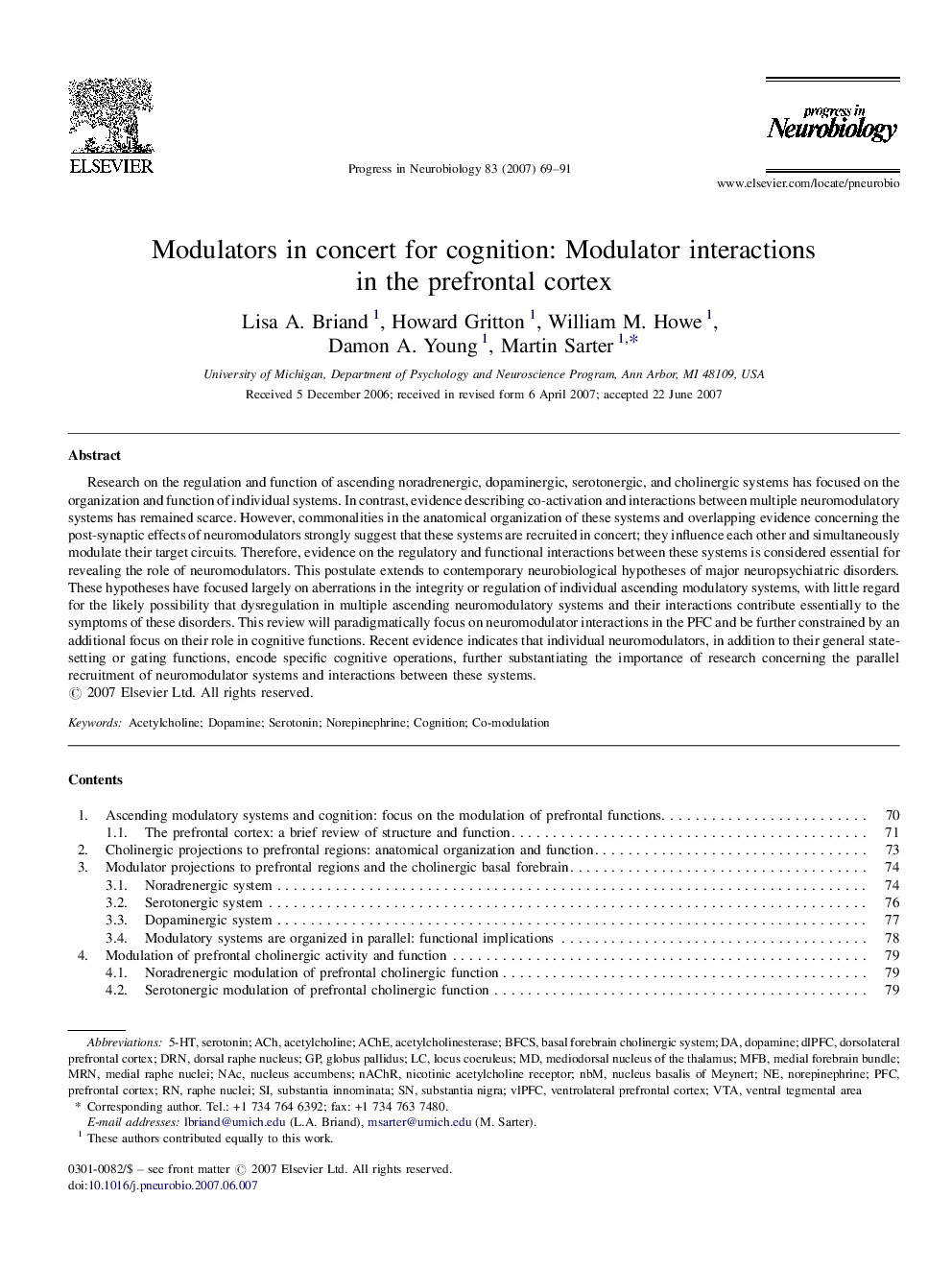| Article ID | Journal | Published Year | Pages | File Type |
|---|---|---|---|---|
| 4353809 | Progress in Neurobiology | 2007 | 23 Pages |
Research on the regulation and function of ascending noradrenergic, dopaminergic, serotonergic, and cholinergic systems has focused on the organization and function of individual systems. In contrast, evidence describing co-activation and interactions between multiple neuromodulatory systems has remained scarce. However, commonalities in the anatomical organization of these systems and overlapping evidence concerning the post-synaptic effects of neuromodulators strongly suggest that these systems are recruited in concert; they influence each other and simultaneously modulate their target circuits. Therefore, evidence on the regulatory and functional interactions between these systems is considered essential for revealing the role of neuromodulators. This postulate extends to contemporary neurobiological hypotheses of major neuropsychiatric disorders. These hypotheses have focused largely on aberrations in the integrity or regulation of individual ascending modulatory systems, with little regard for the likely possibility that dysregulation in multiple ascending neuromodulatory systems and their interactions contribute essentially to the symptoms of these disorders. This review will paradigmatically focus on neuromodulator interactions in the PFC and be further constrained by an additional focus on their role in cognitive functions. Recent evidence indicates that individual neuromodulators, in addition to their general state-setting or gating functions, encode specific cognitive operations, further substantiating the importance of research concerning the parallel recruitment of neuromodulator systems and interactions between these systems.
